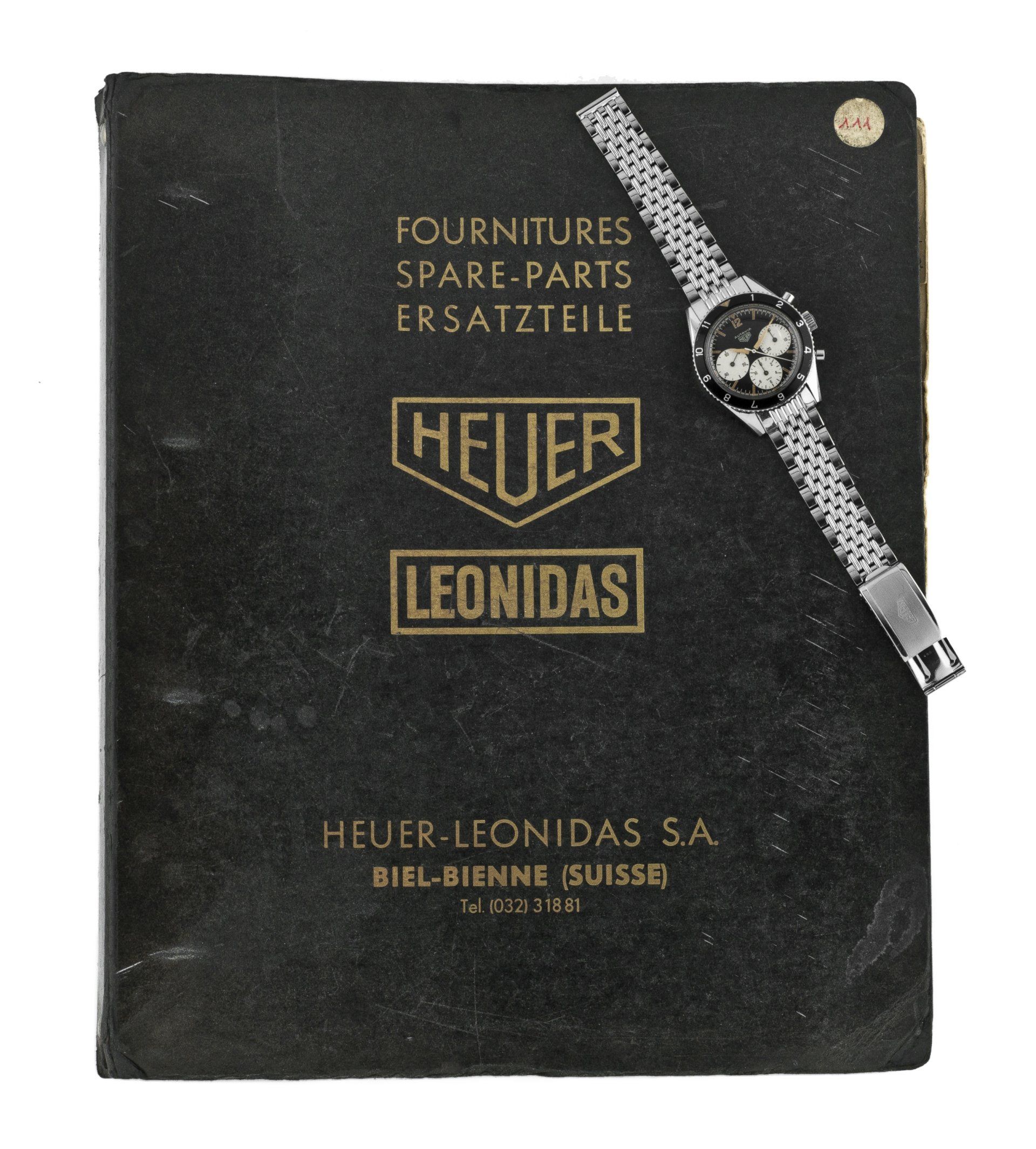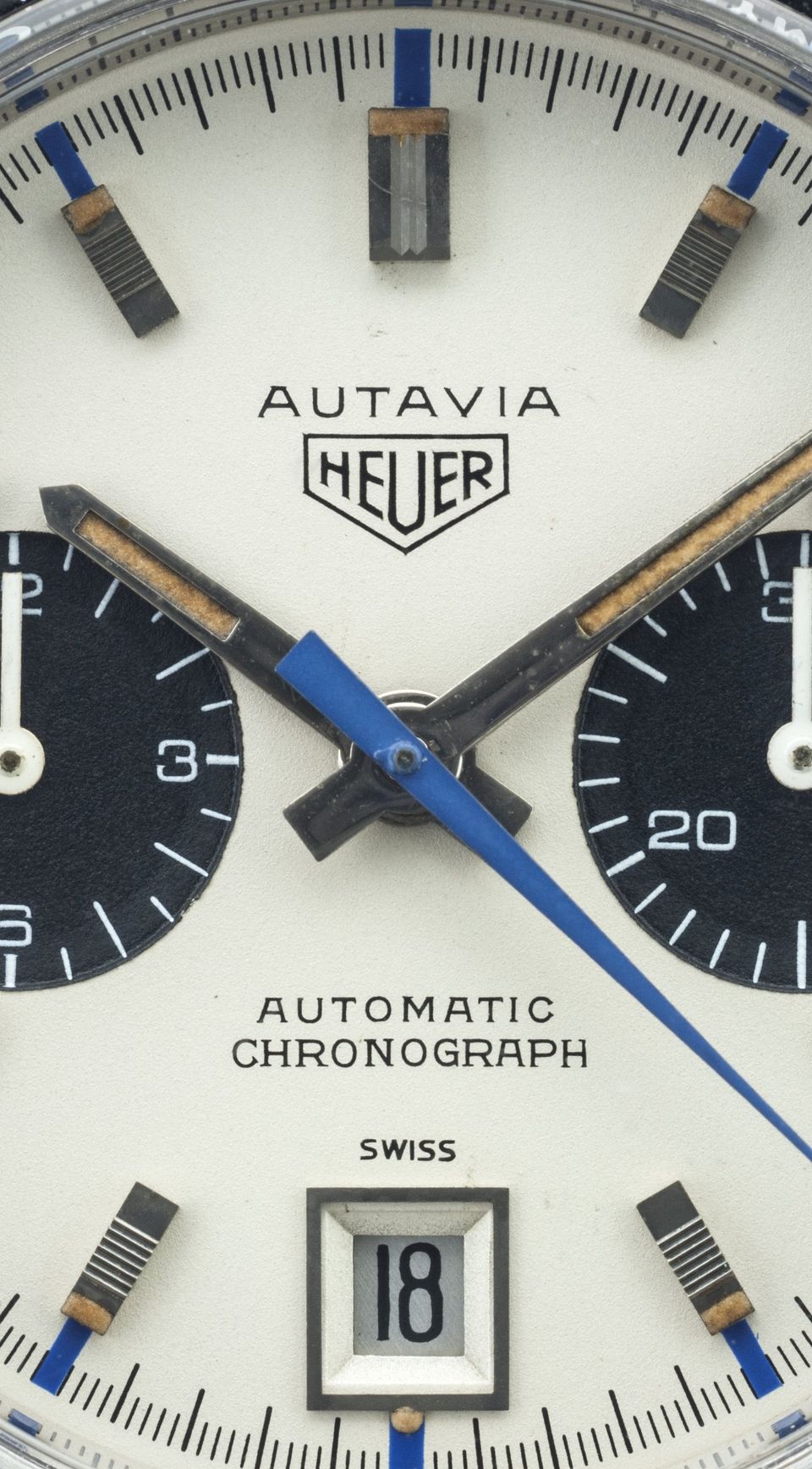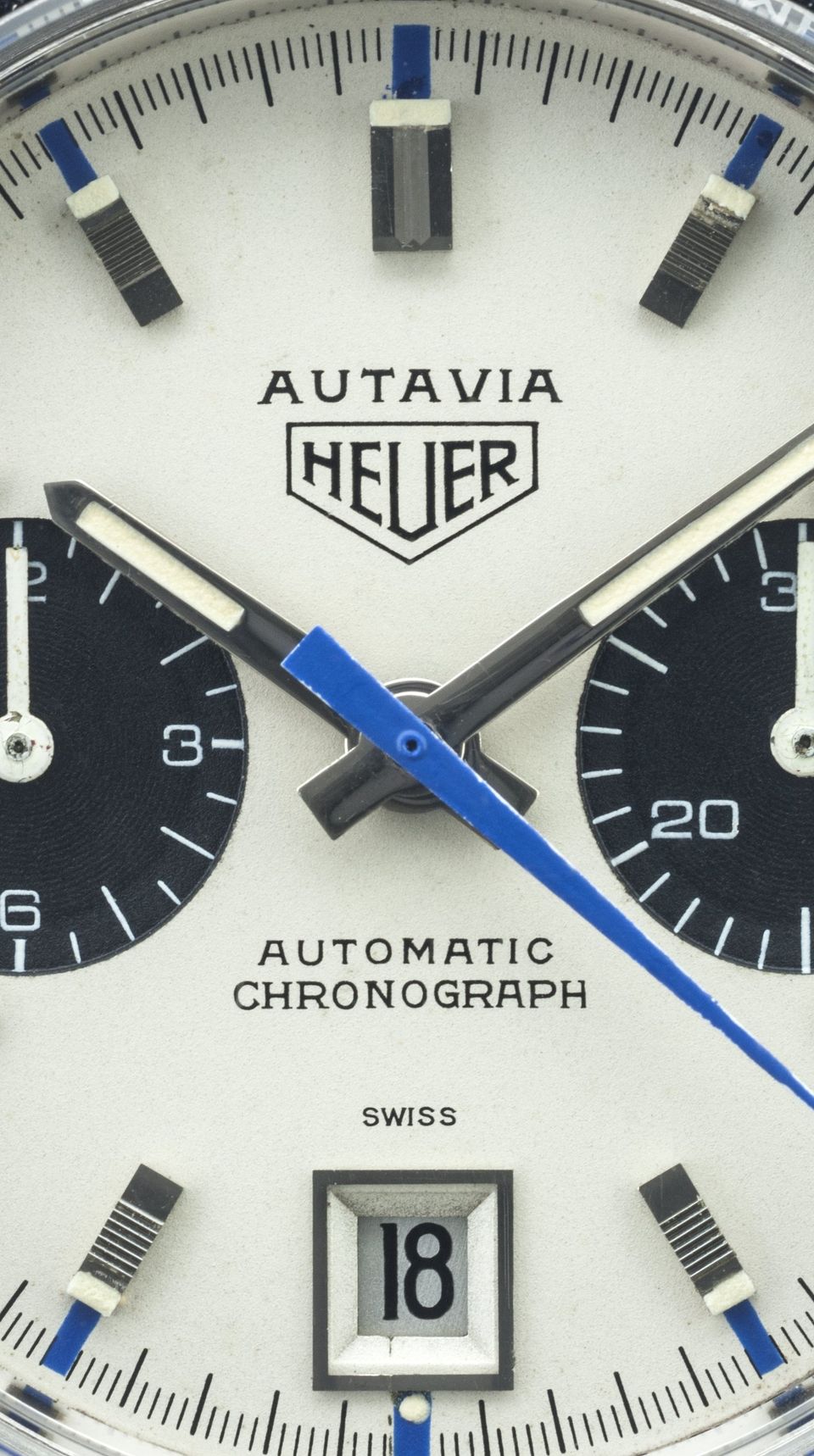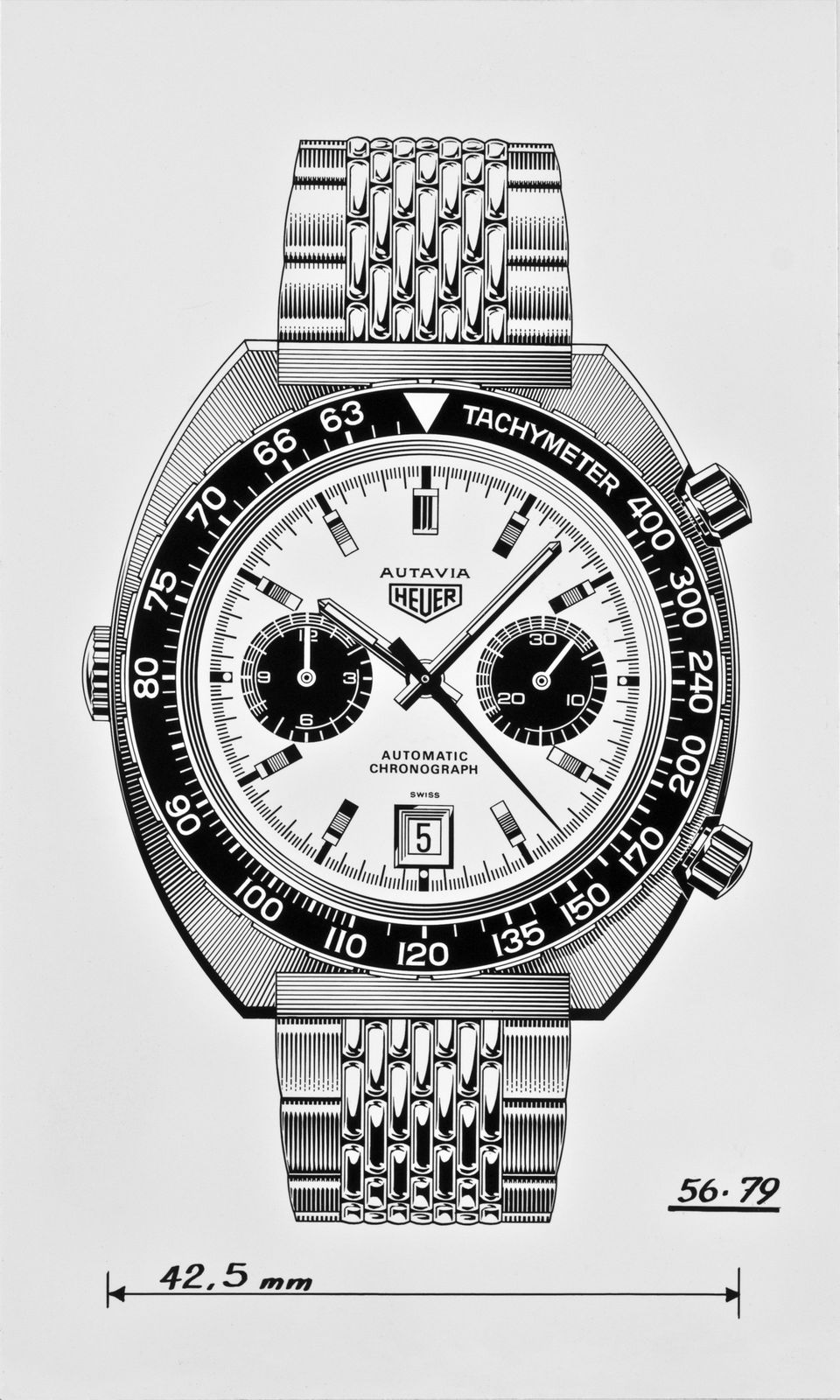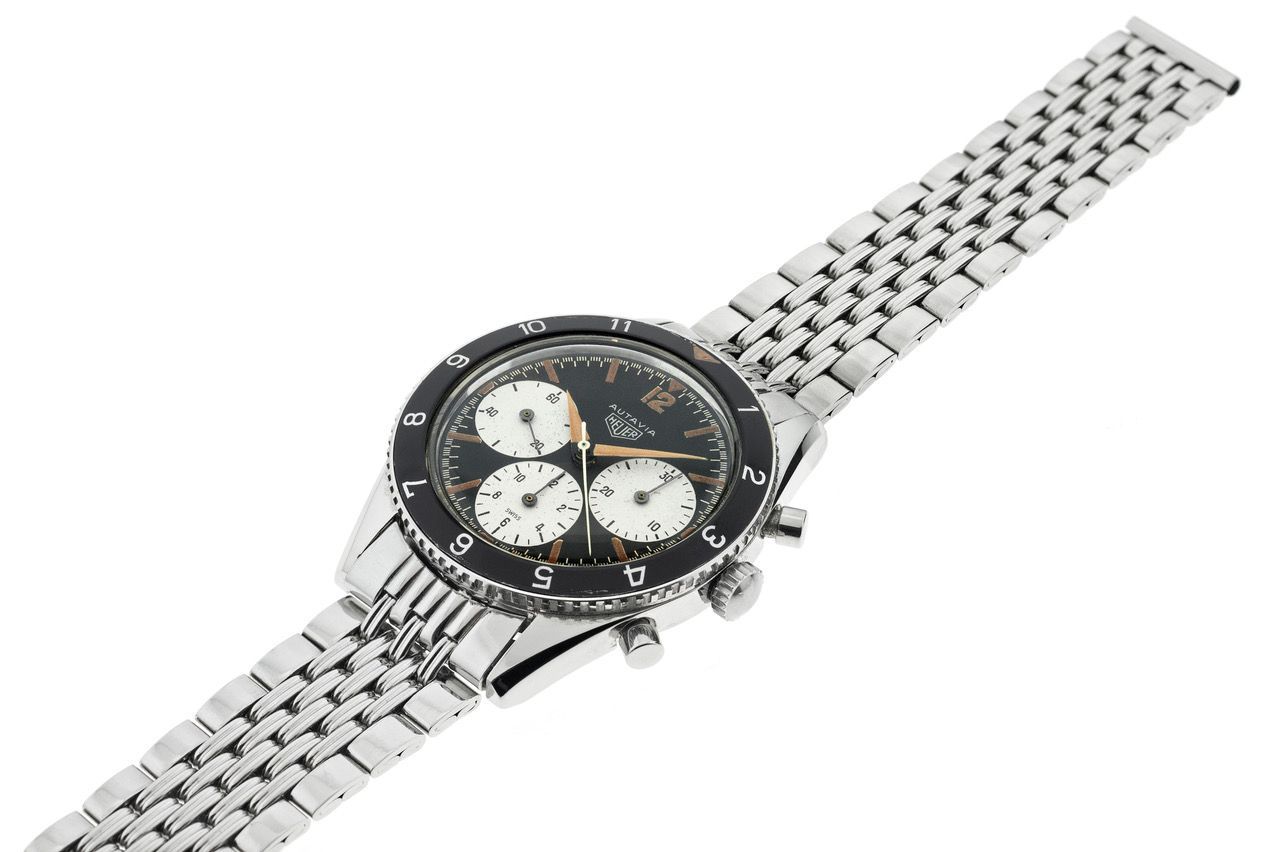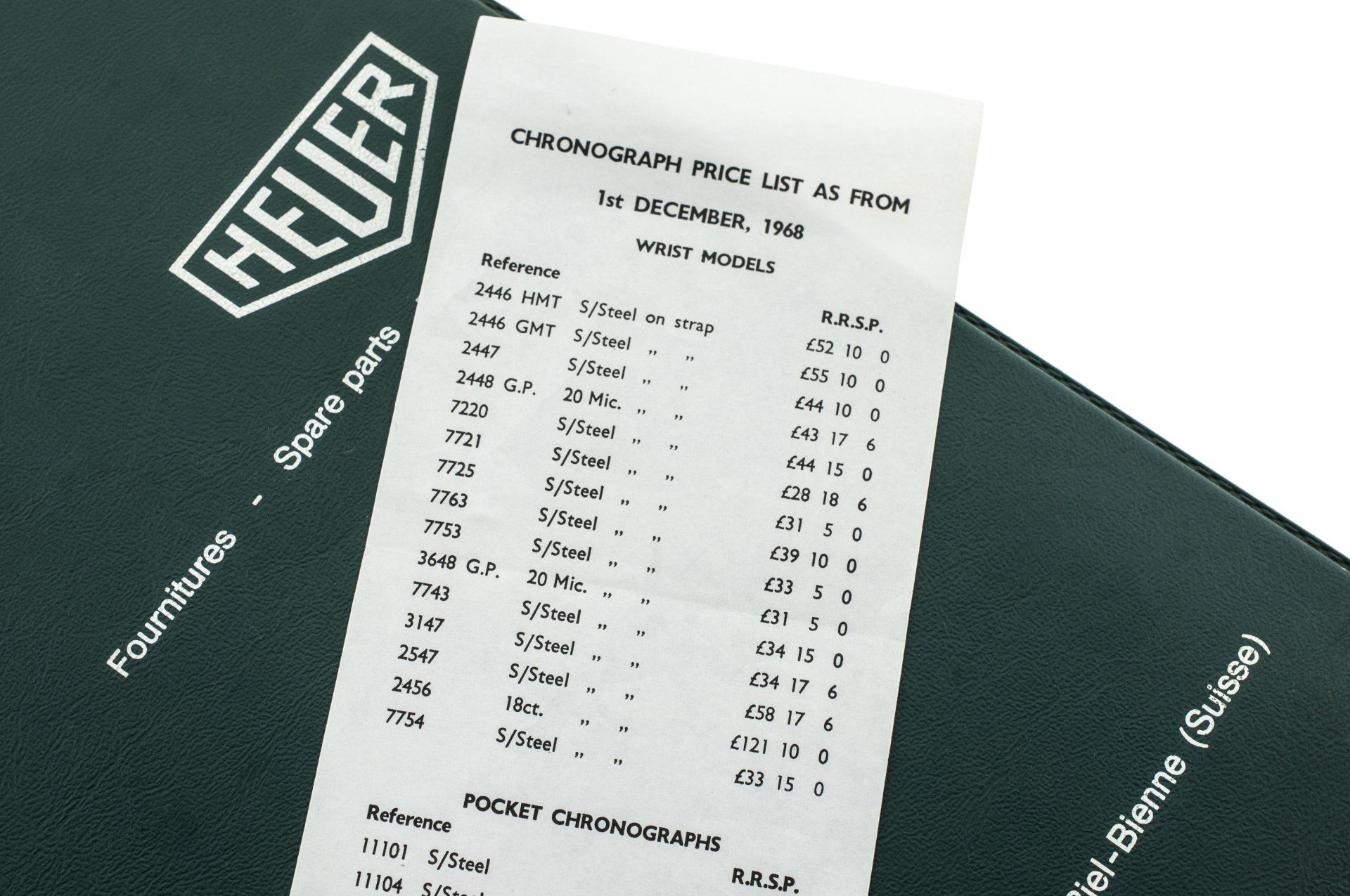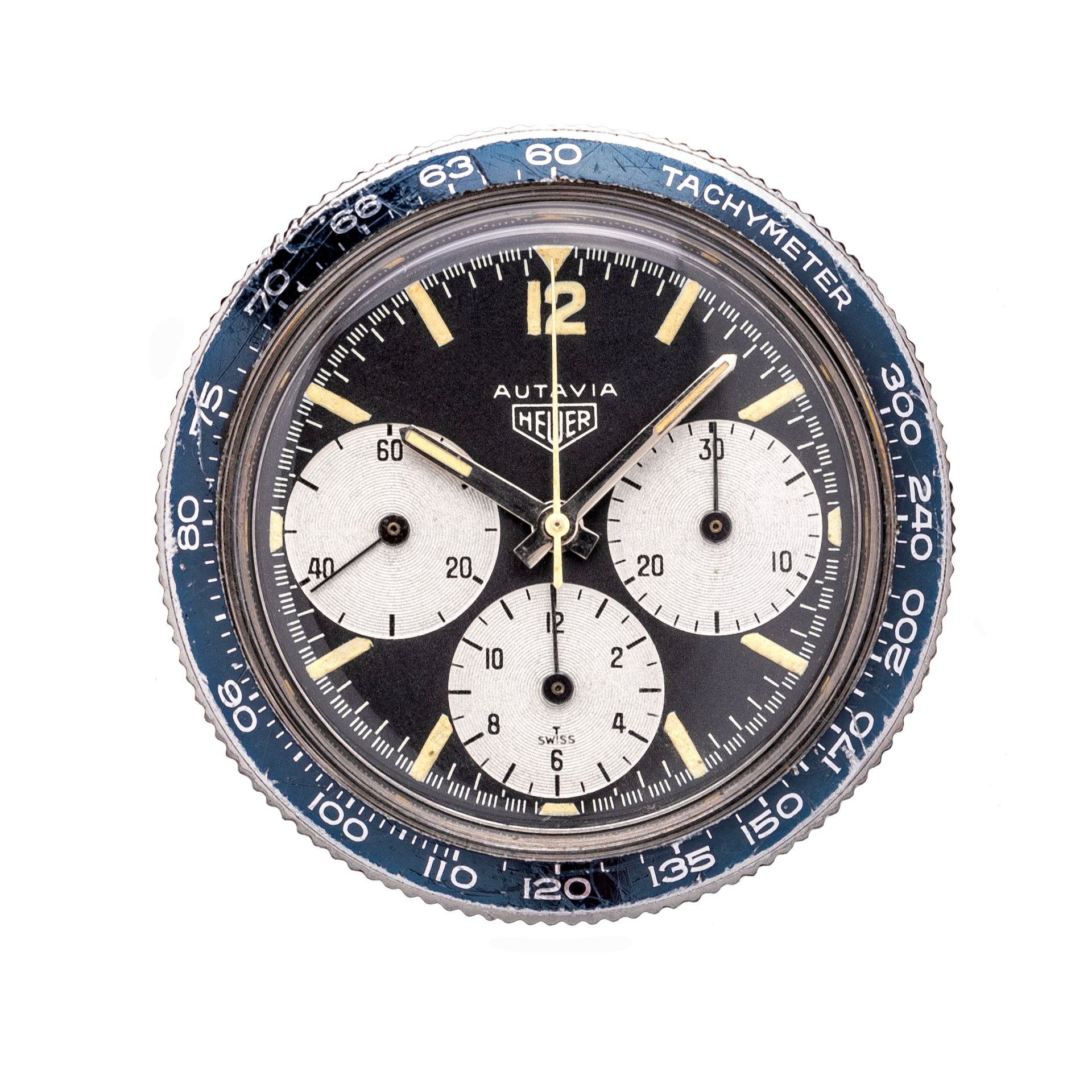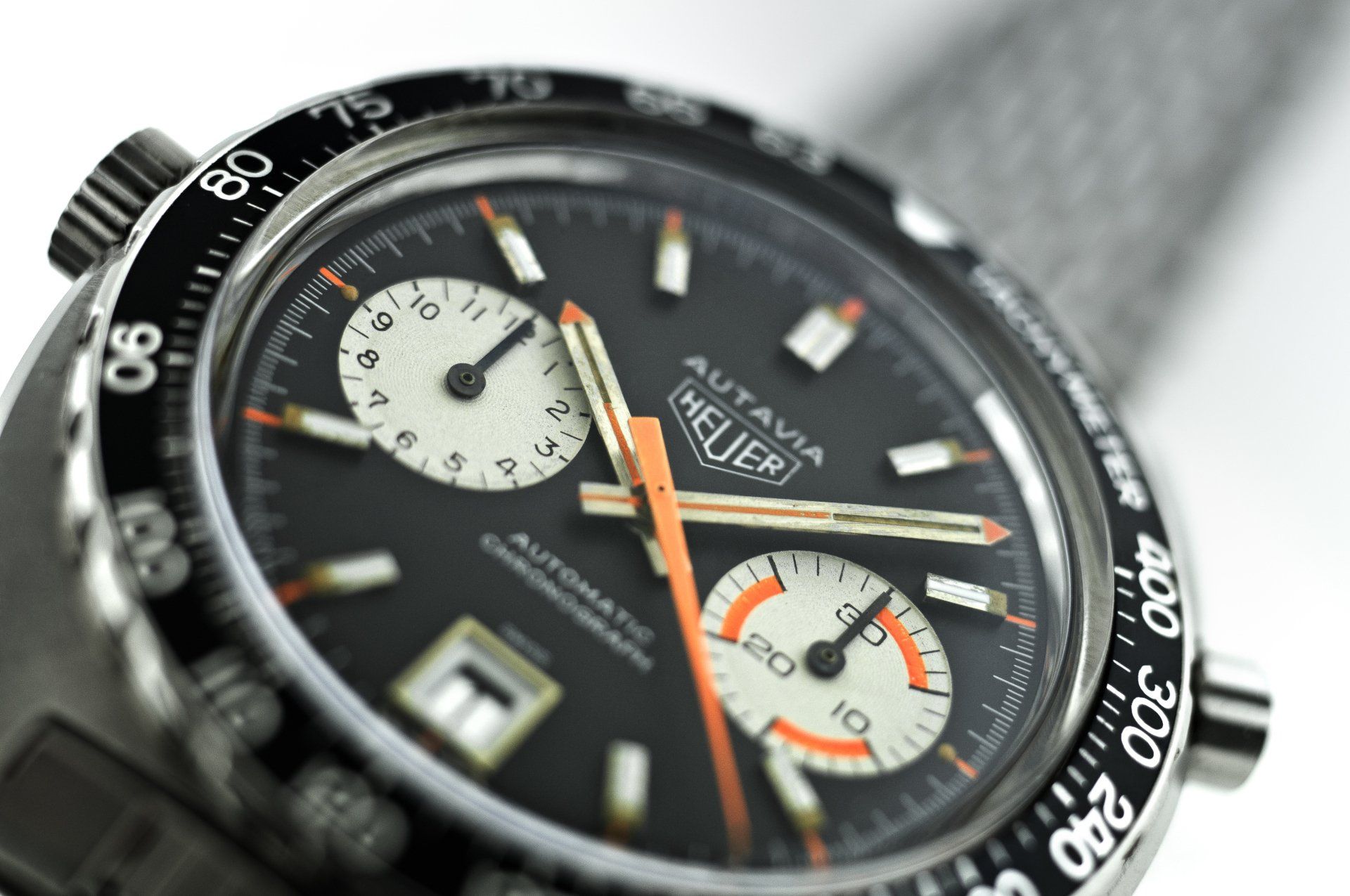The Flat and Thin V Autavia Siffert 1163T
Flat or thin V? The subtle variations of the text style on the 2nd execution Autavia "Siffert"...
Collecting watches can be a funny old game and although I don't think of myself as an "anorak", I must be due to the crazy amount of details I have stored in my brain about the small bits of stainless steel we strap to our wrists. Ask my wife and there seems to be no room for anything else, certainly trying not to spill tea when I make a cuppa seems to be totally beyond me! To be fair to us "anoraks", to be a successful collector you do need to invest a considerable amount of time to make sure you know what you're buying and so the fine details really matter. One of those details you will hear mentioned when collecting the Autavia Siffert are flat and thin Vs, specific to the 2nd execution 1163 models, so known because it follows the "Chronomatic" Autavia 1163T, also known as the "1st execution".
Interestingly, although you often hear collectors mention the 'flat V' as a desirable buying feature when talking about the 2nd execution Siffert Autavia, it is in actual fact the most commonly observed dial variation of the two - it would be rarer to have the 'thin V'! Ongoing research means that what we now know about Heuer has evolved over the past decade and some of the information collectors have in their heads is out of date. It turns out that some things are less rare than we originally thought, while others are rarer. The 2nd execution Siffert is observed in the same serial run as the black dial 1163MH which spanned circa 2500 serials, and the allocation seems to be reasonably evenly split. Interestingly if you look at the serials on the database the rarest Siffert (apart from the Chronomatic), although the least discussed is the 3rd execution version, with black stripe steel hands and later markers.
As you can see by looking at the pictures of both dials below, the difference between the flat V and the thin is self-explanatory. Essentially, they are just two different dial batches. The main differences to note on these two dial batches, are that the text is printed heavier on the flat V and with less serifs and the "Automatic Chronograph" and "Swiss" text sits lower on the dial. These position changes in dial text are similar to those found on the multiple changes of the standard production Monaco 1133B dials. We are unsure whether that was at the behest of Heuer or the dial maker Singer (much more likely) but there tended to be a change to some of the details with every new dial batch. Sometimes these changes were obvious and can be used as dating features, such as a major change to text, for example when "Chronomatic" changed to "Automatic Chronograph", or a change in marker style. However, it was often a subtle text change as we observe here. Similar changes to text are often echoed on other models and brands and tend to have a timeline. The vogue in the 1960s was for text with a more pronounced serif style, but the pronounced serif flourishes get diluted throughout the 1970 and 80s and today it has largely disappeared unless someone is trying to hark back to those days using a period style. You can also view below the original artwork made for Heuer (dated 1969), showing the rarer thin V variant.
Personally, when it comes to valuing the two different 2nd execution Siffert dials, I would not say one is more valuable than the other and, if I were valuing them, I would be led purely by the condition and originality of the watch, along with the overall feel of the patina. In this instance I prefer the warm patina on the thin V so would pay more for that and be happy that although people don't mention the thin V as much it is actually rarer ;) Values for this reference vary between as little as £5000 for a poor example and as much as three times that if you had a perfect example on a GF.
If you would like to learn more about vintage Heuer chronographs from this period (specifically the Autavia, Carrera and Monaco) then click the link below to read about the various Heuer collector reference books.
Note: Please do not reproduce these images without permission.
